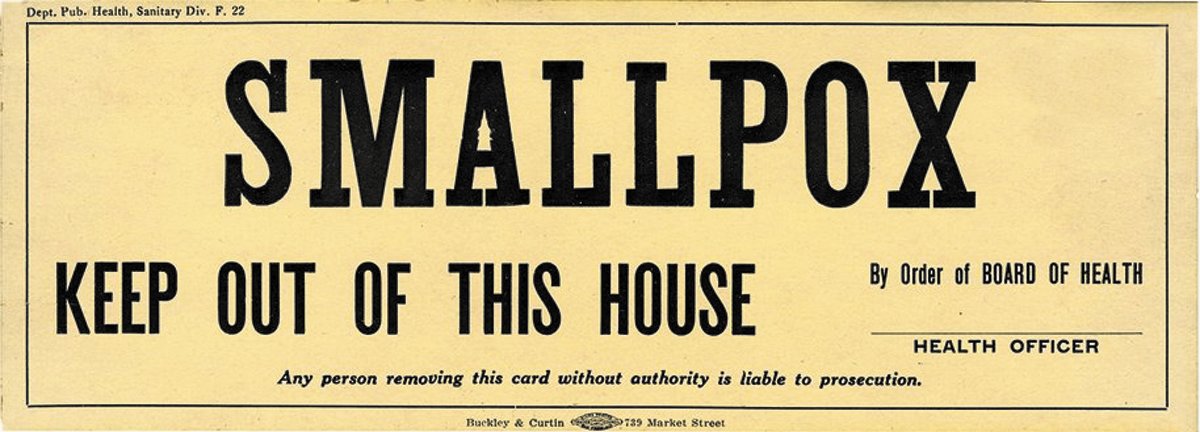Each time Americans thought a Small Pox pandemic had come to an end, another outbreak would occur. From 1870 to 1874, then again in 1902 and 1911, people suf-fered and died or were perma-nently …
This item is available in full to subscribers.
We have recently launched a new and improved website. To continue reading, you will need to either log into your subscriber account, or purchase a new subscription.
If you are a current print subscriber, you can set up a free website account by clicking here.
Otherwise, click here to view your options for subscribing.
Please log in to continue |
|

Each time Americans thought a Small Pox pandemic had come to an end, another outbreak would occur. From 1870 to 1874, then again in 1902 and 1911, people suf-fered and died or were perma-nently disfigured by the virus. Spread by airborne respiratory droplets and skin to skin contact, the highly contagious illness produced a rash of small blisters on the face, hands and arms be-fore spreading to the rest of the body. Eventually lesions formed on the palms of the hands and soles of the feet as fever and flu-like symptoms raged.
The only way to control the spread of Small Pox among the population was to keep infected people away from everyone else. In each house where someone had fallen ill with the virus, a placard was nailed to the door by the health officer, warning those inside to stay in and those outside to stay out. Anyone ig-noring the warning would face arrest.
In Nov. 1911, the three chil-dren of Warwick mill worker David Joyal fell ill and the fami-ly physician was called. A diag-nosis of Chicken Pox was made and little more was thought of the matter. Spread the same way Small Pox was spread, Chicken Pox appeared more on the trunk of the body than anywhere else and the lesions were not as deep as those produced by Small Pox. It was not thought of as a serious illness whereby Small Pox had already proved deadly.
On Nov. 20, Joyal’s wife sud-denly became ill as well and it was necessary for a doctor other than their family physician to examine her. Apparently nothing of concern was related to Mr. Joyal and he was shocked when the health officer appeared at the house the following day to nail up a Small Pox quarantine sign. Furious, he ripped the sign off his door and was promptly ar-rested.
Later that day, a hearing was scheduled. Due to the conta-gious nature of the virus going around, unusual arrangements had to be made. Handcuffed, Joyal was driven in the police chief’s car to the front of the carriage shed behind the town hall. The judge, court clerk, health officer and attorney stood in the open air at the front of the shed.
Joyal had elected to represent himself and raised his chained hands to be placed under oath. He asked the doctor who had examined his wife if he had a diploma. The physician stated he did indeed.
“Can you tell Small Pox from Chicken Pox?” Joyal asked. “Are you sure my wife has Small Pox?”
The doctor answered in the af-firmative.
Joyal explained that having the placard on his house put his family in a predicament when it came to obtaining food and that no provisions had been made for them.
“When the doctor put the flag on my house, he took my place in the family and it was his business to see that my family should have something to eat,” Joyal told the judge. “He told me to see the overseer of the poor and I told him it was not my business to see the overseer of the poor and then I lost my temper.”
Joyal admitted angrily ripping the placard down, explaining that he was “quick-tempered”. The judge ordered imprisonment although records do not state for what duration. In the days that followed, additional adults were arrested and children placed on probation throughout Rhode Island, for failing to abide by the Small Pox quarantine laws.
Kelly Sullivan is a Rhode Island columnist, lecturer and author.
Comments
No comments on this item Please log in to comment by clicking here